From dramatic to demure, the peplum makes a statement. It’s a style that’s been around since 500 BC and, despite ups and downs throughout fashion history, continues to fascinate. But it can be a rather divisive style. Today, camps of peplum lovers and haters are either celebrating or bemoaning the fact that the style appears to be making a comeback in 2024!
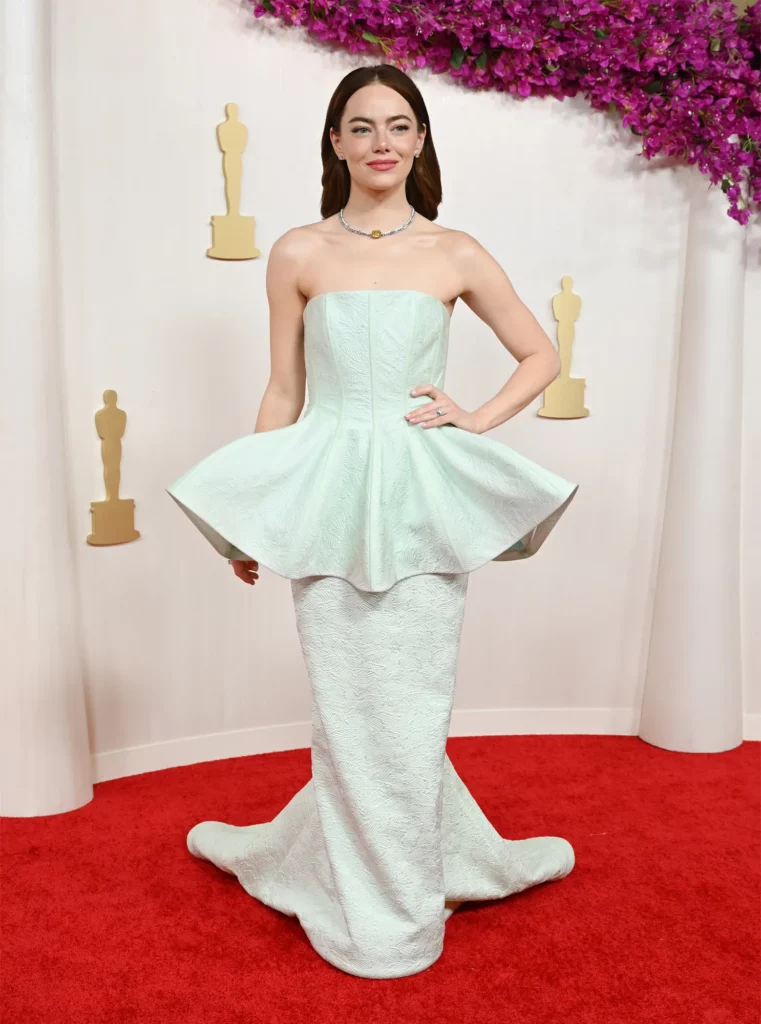
Emma Stone in a custom Louis Vuitton gown at the 2024 Oscars. Image from here

Kendall Jenner photographed in vintage Thierry Mugler (from the 1988 Les Infernales collection). Image from here
Style Fit for a Greek Goddess
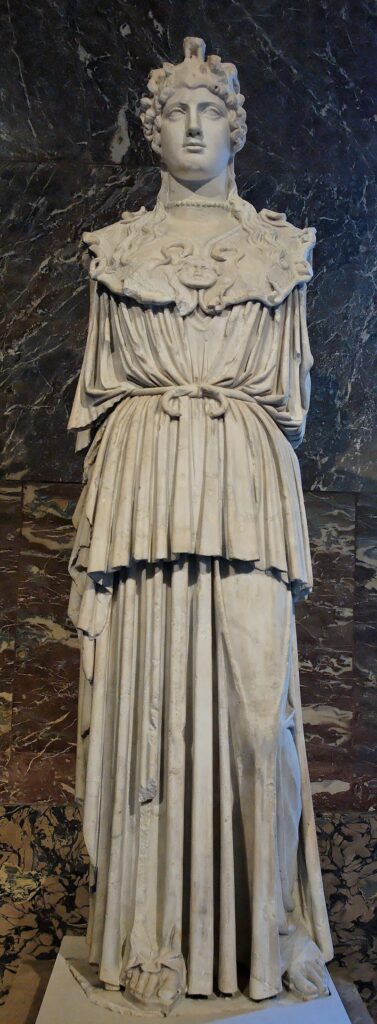
A statue of the Greek goddess Athena wearing a peplos. Image from here
The term “peplum” derives from the Greek word “peplos”, which was a tunic worn by women in Ancient Greece that was tied at the waist and pulled up through the belt to create a drapey overfold of fabric. If the overfold was long, a separate belt was used to cinch the overfold at the waist, creating the familiar peplum look.
Peplum comes from a Greek word for ‘tunic’ and is an almost skirt-like frill or addition. They were once fitted to a waistcoat or doublet, but now to a woman’s bodice, extending it below the waistline.
The Business of Fashion
Ruffles and Flounces During the Renaissance
The look reappeared during the 1500s in Europe when the farthingale, a hooped underskirt that allowed dresses to expand away from the body below the waist, gained popularity. In order to cover the pronounced edges that the farthingale created, elaborate ruffles or gathered flounces extended from the waist to create a peplum effect.
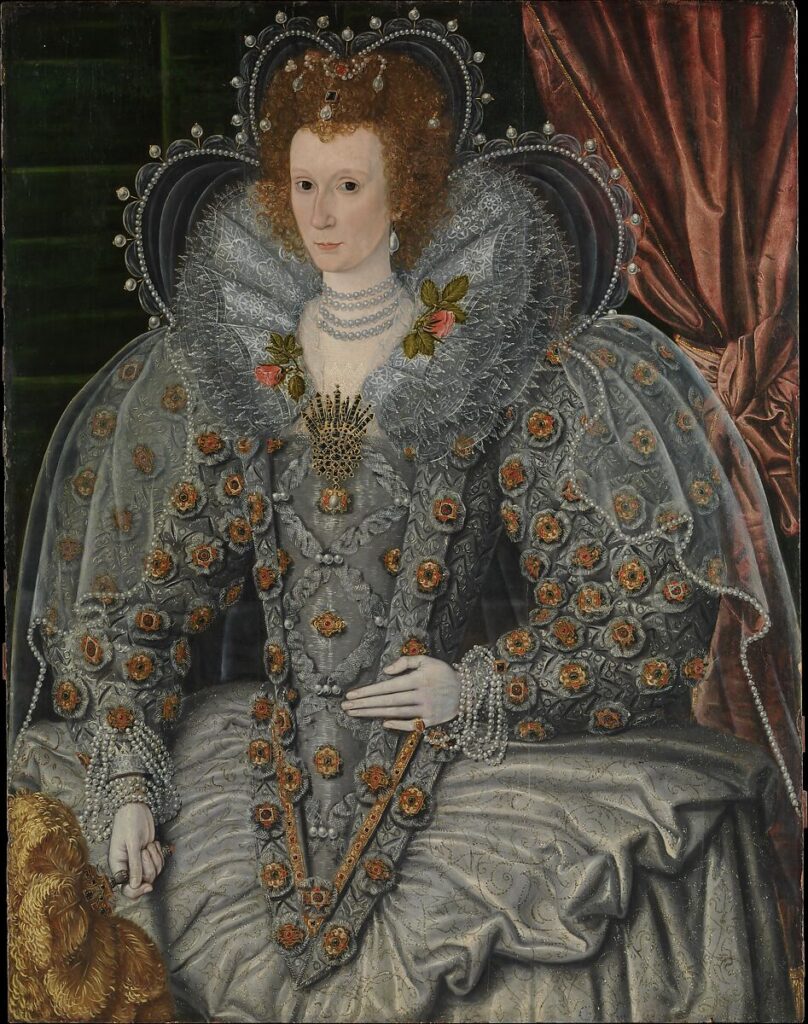
Portrait of a woman by an unknown British painter. 1600. Image from here.
Draped Overskirts in the 1800s
By the mid-1800s, the style returned in a less dramatic way. Bustles, which added fullness to the back, became popular, so overskirts decorated with flounces and ruffles were added below the waist to cover the front as decoration (or even modesty).
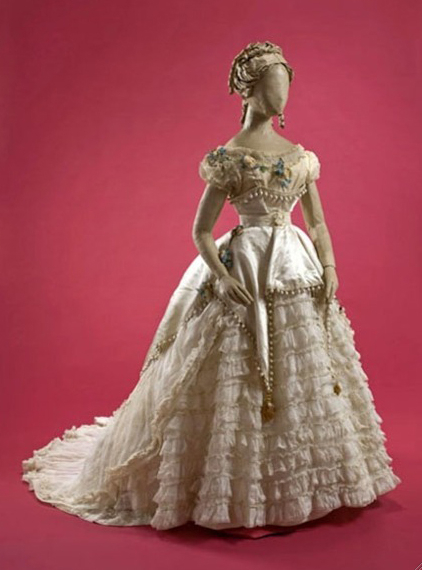
Peplum with bustle from 1866-67. Image from here
A couple of decades later, the bustle style appeared again. This time, overskirts were draped around the hips to form a peplum-like effect and hourglass shape.
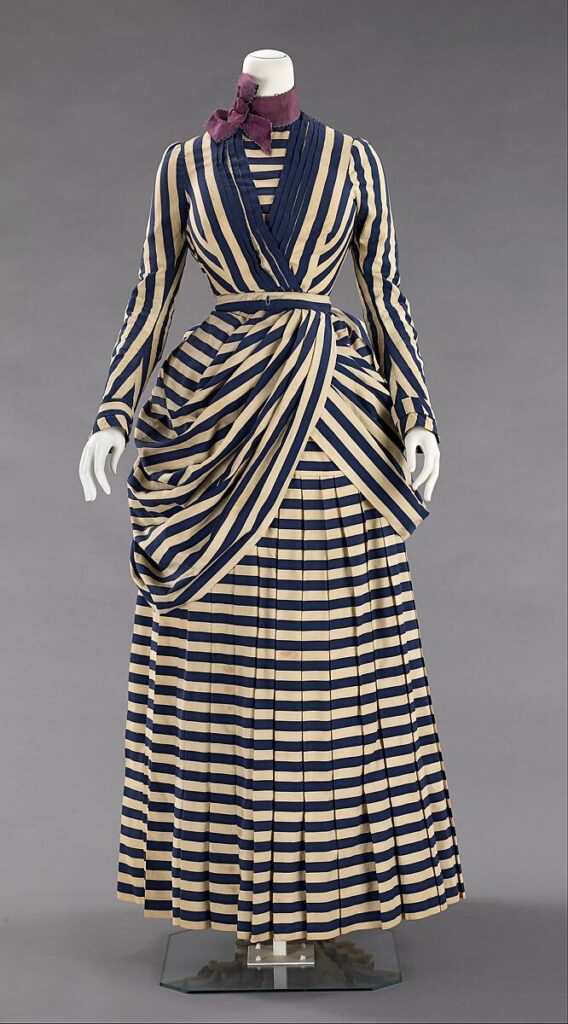
Asymmetric draped bustle dress from the 1880s. Image from here
The Peplum Goes Couture
In 1947, peplums became couture when Christian Dior brought back the style with the iconic Bar Suit from his New Look collection. After the austerity of World War II, women embraced the extravagance of the full skirt and the soft femininity of the hourglass silhouette.
In fact, this is one of my fave looks of all time!
The Bar Suit was so iconic for Dior that appeared in different iterations over the years.

The Bar Suit from 1947. Note the more fitted peplum style and small shawl collar. Image from here

The Bar Suit from 1957. Note the notched lapel collar and more defined peplum shape. Image from here
Drama in the 1980s to 2000s
When fashion became more glam, dramatic, and oversized in the 1980s, the peplum returned in new ways.
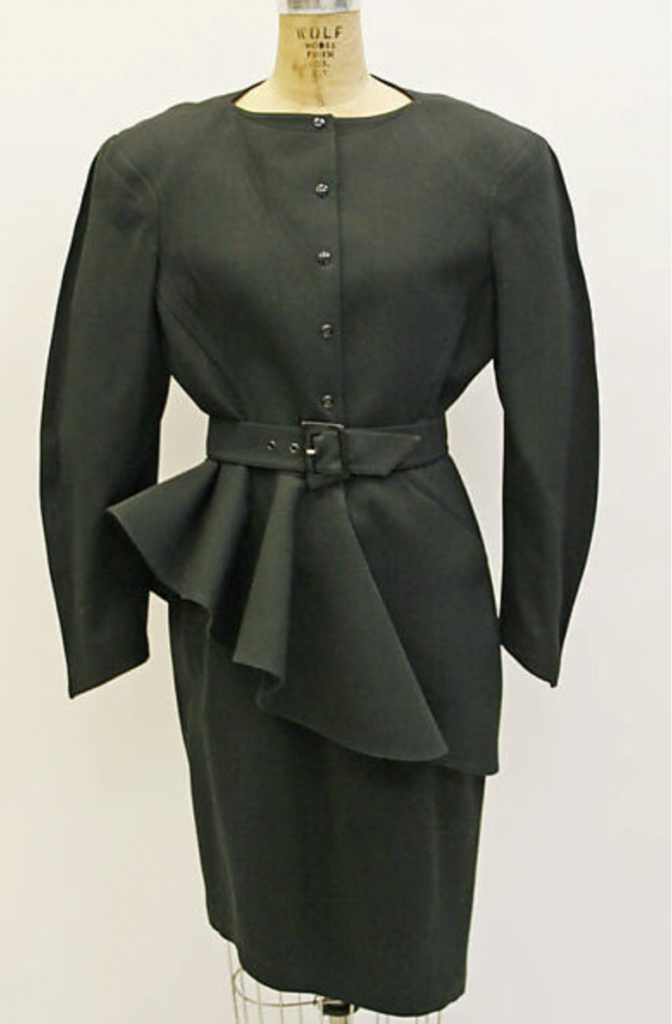
Thierry Mugler suit from 1986. Image from here
In the 2000s, one of the most beautiful peplum looks came from Dior again. The shape is reminiscent of the Bar Jacket but with a fresh twist.
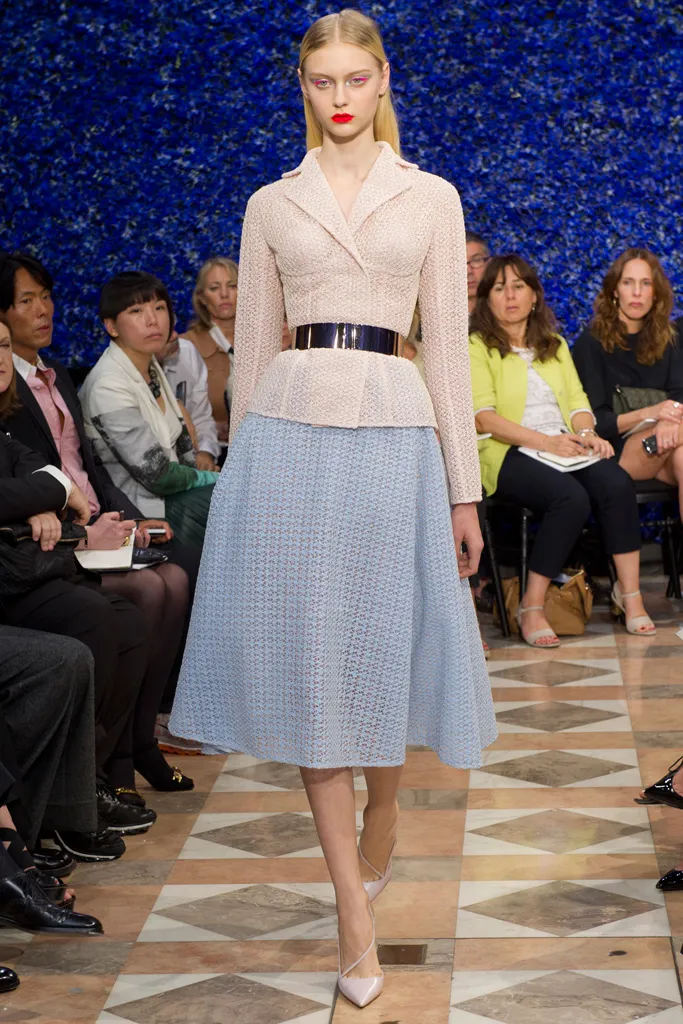
Raf Simons for Dior in 2012. Image from here
A Timeless Style – But Tricky to Wear
Peplums emphasize or create a feminine hourglass shape, which is what makes it such an enduring classic style. But it is a deceptively tricky style to wear well.
They can be short or long; fitted or voluminous; and made in drapey or structured fabrics. They add an extra layer of fabric at the hips and are generally fitted at the waist so they may draw attention to areas that some may not want to emphasize. Especially for petite women like me, peplums that are long or have a lot of volume can overwhelm and throw off the body’s proportion.
Some things to keep in mind when considering this style:
- Think about proportions. Check where the peplum ends on your body and how much volume it has. If you are petite, a shorter and less full peplum will look more flattering.
- Make sure the garment’s waistline hits your natural waist (if this is the style). If it is above or below your natural waist, the look will be off. If the garment can’t be altered, consider wearing a belt to add the needed waist definition.
- Think about wearing something narrow or fitted on the bottom (eg, pencil skirt, leggings, etc.) to balance the fullness at the hip.
- Have fun with the style! There’s a reason it has endured for centuries and keeps coming back!

Leave a Reply